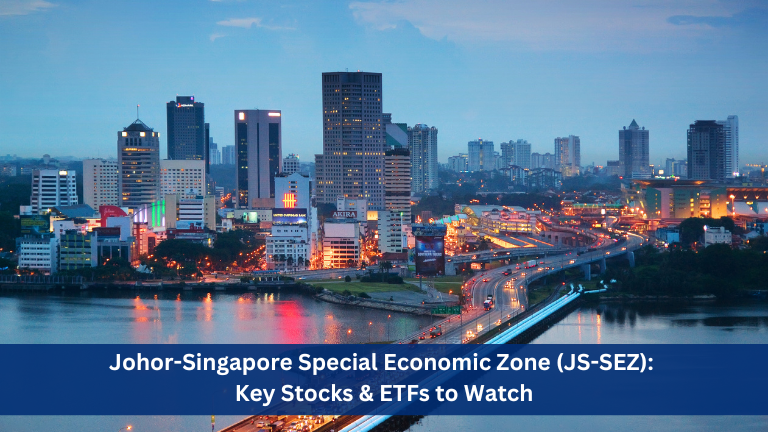The major US indices had their weakest showing over the past month, compared with the first 4 months of 2021. In the past week, US stocks in different sectors like technology, utilities, and small caps have started seeing significant market corrections. And they unlikely to be the only ones to be impacted.
Market watchers are calling the current US market a rolling correction, or a correction that rotates from one sector to another. Unlike a market correction – where prices fall by more than 10% – a rolling correction might see prices dipping by a smaller magnitude.
To be sure, corporate earnings in many of these sectors remains strong. However, valuations have run far beyond justifiable levels. At the same time, there are concerns that the Federal Reserve may start to hike interest rates, as inflation rates start inching upward.
Other sectors that could likely see a correction include retail, consumer discretionary and any others that have been over bought during the pandemic.
Asian markets have not been spared from such corrections either. In mid-May, Asian indices dipped from growing inflation concerns, coupled with worries about fresh waves of Covid-19 infections in several Asian economies, like Taiwan, Japan, and Singapore. Amid sputtering vaccination rollouts, prolonged border closures and renewed lockdowns, volatility in this region is unlikely to let up either.
Investing in a market correction
So what should investors do during a rolling or market correction? Here are a couple of ways to make the market correction benefit your portfolio.
Strategy 1: Review your long-term investment portfolio
In general, a market correction is a common occurrence in a healthy market, and often has limited impact on a long-term investment strategy. That said, a market correction can be a good time for you to review your investment portfolio.
Has your risk tolerance changed? You might have found it easy to accept higher risks during bull markets in lieu of higher possible rewards. A period of market correction is the perfect wake up call for you to review the risk-reward profile of your investments. You may realise that you are less comfortable with the potential losses than you anticipated during the bull market, or you might find yourself even more willing to take risks.
Next, take a closer look at your investments. Are your vested companies doing well in spite of the market correction? Or has the market volatility revealed underlying concerns about their business? If it is the latter, it might be time to adjust the asset allocation of your portfolio accordingly, by divesting part of your investments in favour of other promising stocks that have become undervalued.
You might also want to diversify your portfolio further to adjust your portfolio to a risk-reward profile that is more suitable for your current risk tolerance. If you are seeking to reduce volatility, you might look for non-cyclical stocks or defensive stocks. If you continue to want to see higher returns, you might opt for more high growth stocks.
Strategy 2: Trade the correction for short-term gains
In the short term, market corrections can offer trading opportunities for experienced investors who have the financial wherewithal to do so, without impacting their long-term investment strategy.
For instance, if you have excess funds, you might want to average down your portfolio, or increase your exposure in your existing shareholdings as prices fall. That reduces the average cost of your investment, and help you to gain a better return when prices recover.
You might also want to take advantage of the trading opportunities as prices fluctuate. This is where you would trade Share CFDs.
CFDs, or Contracts For Difference, are an agreement between two parties to settle the difference between the opening and closing prices of the contract. That means investors can trade the price movements of an underlying asset (like indices, commodities and shares) without owning it.
Share CFDs, as its name suggests, are CFDs where the underlying asset is the shares of a specified company.
Share CFDs are leveraged products, which allows investors to trade on margin. It is offered in smaller contract sizes so investors can enter the market with a smaller capital outlay and it also comes with the same risks as other forms of leveraged trading.
During market corrections, it allows you to trade both long and short positions, so you can take a short position on a company to capitalise on falling prices, while retaining your existing long positions.
How to trade share CFDs?
Share CFDs can be traded on proprietary platforms offered by reputable CFD providers. If you plan to trade multiple asset classes besides share CFDs, you can try out the popular multi-asset platform MetaTrader 5 (MT5) offered by Phillip Futures.

The Phillip MT5 platform currently offers over 50 different share CFDs – including US, Singapore and Hong Kong listed companies – and is constantly adding more to that list. Investors trading on Phillip MT5 can trade share CFDs with zero commission, no minimum fees, no platform fees, and they can trade as low as 1 share CFD.

The platform also supports ETF CFDs, Indices CFDs, Commodities CFDs, Cryptocurrencies CFDs, as well as Forex. Furthermore, Phillip MT5 is integrated with Trading Central indicators, and the powerful Autochartist pattern recognition tool.
Try out the Phillip MT5 platform with a free demo account, and start trading share CFDs with zero commission, no minimum fees, and no platform fees today.






